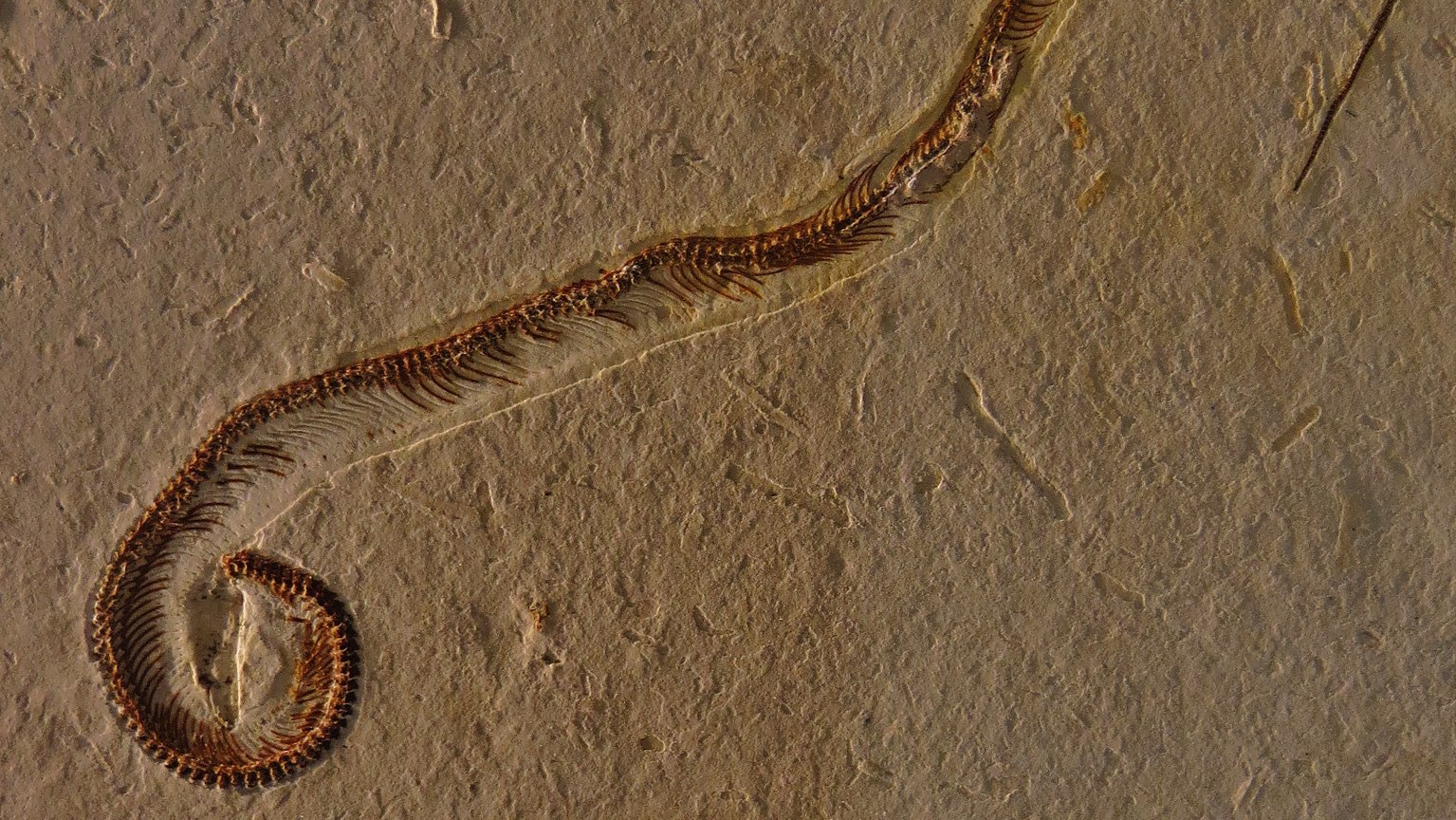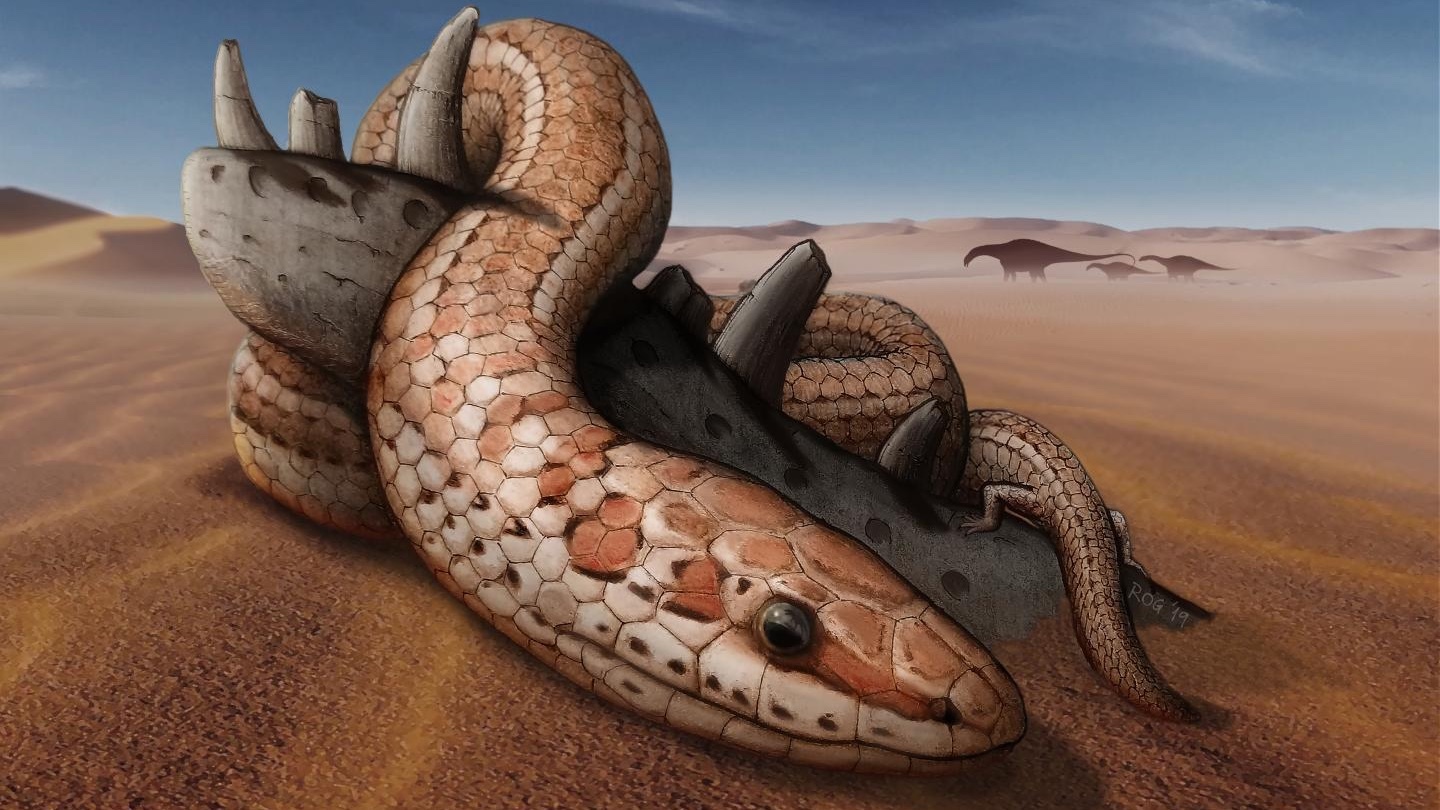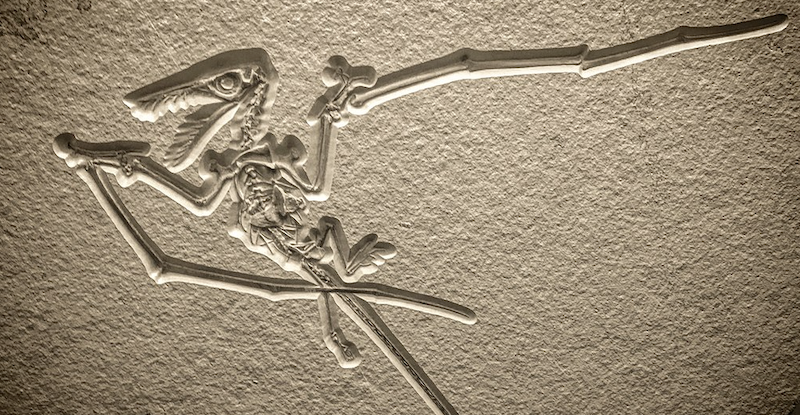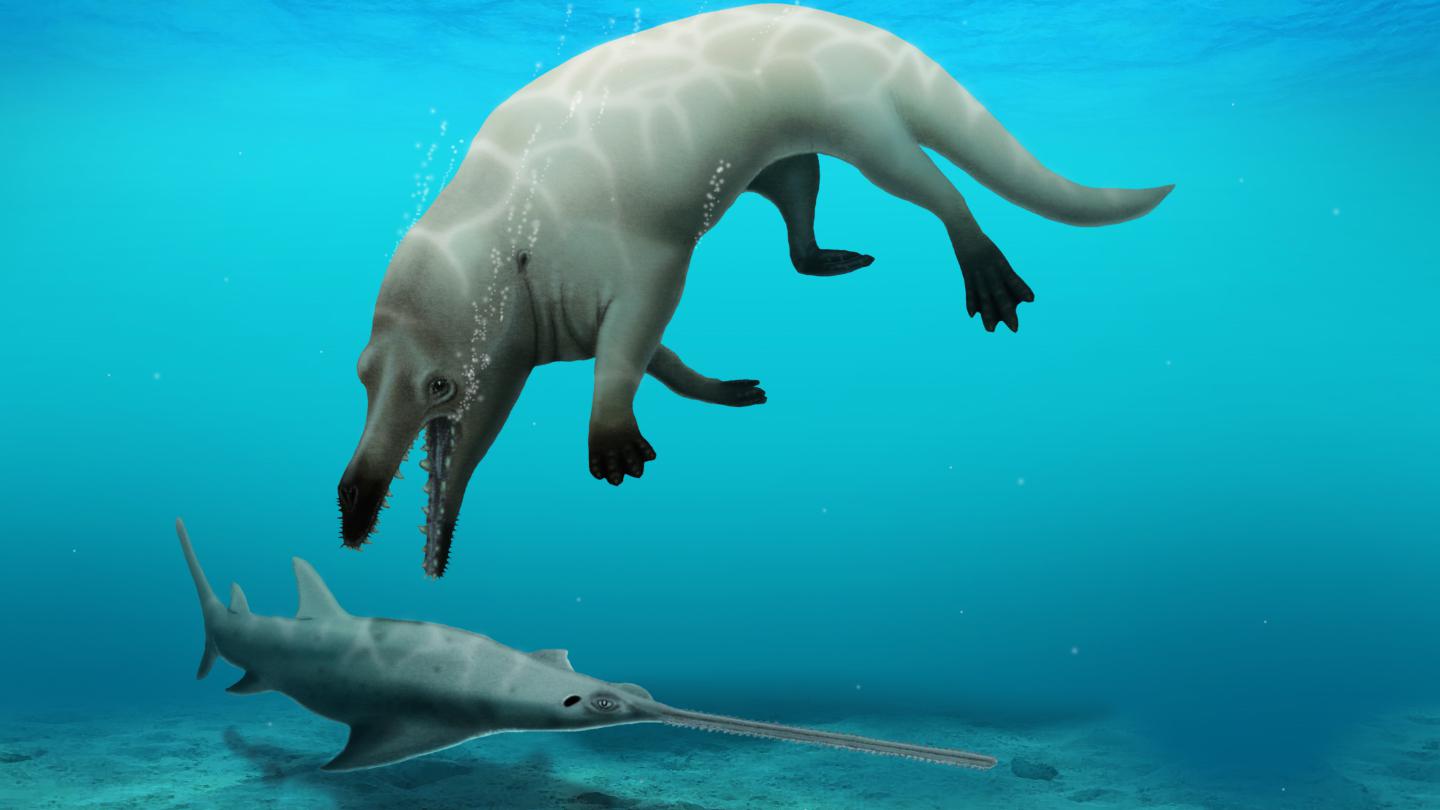Debunked: controversial fossil linking lizards to first snakes

- In 2015, researchers reported the discovery of a four-legged snake fossil, Tetrapodophis amplectus, a puzzle piece long sought by scientists to illustrate the evolution of snakes from lizards.
- Now, a team of paleontologists debunk this claim, asserting that the specimen was an aquatic lizard.
- Though not a prized missing evolutionary link, Tetrapodophis is still an important specimen, both for its biology and the controversy surrounding the circumstances of its findings.
A lack of limbs is one of the most eye-catching, distinguishing features of snakes. The ancestor to this group of reptiles, however, likely had four limbs. In fact, researchers have long posited that snakes evolved from lizards, though the fossil record did not completely substantiate their claims. While fossilized snakes with two hind limbs have been found, a four-limbed snake was still elusive. So, in 2015, researchers stunned the scientific community by announcing that they had discovered a preserved, four-limbed snake specimen in Cretaceous rock, found in present-day Brazil. Tetrapodophis (Greek for “four-legged snake”) amplectus was born and the “missing link” presumably discovered. The research was published in the journal Science and spurred thousands of popular news articles.
Though Tetrapodophisseemed like an excellent candidate for the coveted breakthrough find, an extraordinary claim requires extraordinary evidence — or at least a scientific consensus. When paleontologist Michael Caldwell of the University of Alberta and his colleague traveled to examine the fossil, they soon found discrepancies that made them question the original claim.
In a recent paper published by the Journal of Systematic Paleontology, Caldwell and his team detailed and recharacterized the anatomy, morphology, and evolutionary relationships of Tetrapodophis. Though the first study included a detailed characterization, Caldwell noted that the original researchers focused on the skeleton and skull of the specimen. However, the fossil was found when a slab of rock was split; one side contained the skeleton and skull, and the other preserved a natural mold of Tetrapodophis’ body, which was pressed into the rock itself. According to Caldwell and his team, the mold preserved several features that indicate Tetrapodophis was not a snake.
Several morphological features not presented in the original study, such as unhooked teeth and an absence of large ventral scales, were used to revise the original characterization. The conclusion? Tetrapodophis is not a snake, but rather a dolichosaur, a type of long-bodied aquatic lizard.
Tetrapodophis is still unique
Although the authors refuted the purported claim that Tetrapodophis is a snake, the authors stressed that it is still a very exceptional and rare creature, with intriguing ecological and physical features not seen in other lizards. Tetrapodophis’ anatomy and morphology — as well as the half-finished, fish-like meal found preserved in its gut — indicate that itlived in an aquatic habitat. However, unlike other dolichosaur lizards from the late Cretaceous, the lizard likely lived in freshwater, given the environment in which the specimen was discovered. A similar specimen from Japan supports the view that a freshwater habitat might have been preferred by the earliest lizards of their kind.
Additionally, one of the more notable features of Tetrapodophis is that it is exceptionally small. At roughly 195mm in length, it is approximately the size of the smallest known extant lizards.
A reptilian discovery
When Tetrapodophis made news in 2015, the circumstances of its discovery were mired in ethical and legal issues. There are strict laws governing the exploration of public property, including fossils, in Brazil. To protect the country’s scientific and cultural heritage, any researchers hoping to collect scientific material need to consult and collaborate with scientists at Brazilian institutions. The rules also clearly specify that important fossils, like Tetrapodophis, must remain in Brazil. These types of rules are hardly abnormal. Similar laws exist in Canada, Italy, and China, among other countries.
Without appropriate permits for the specimen’s removal, as well as other probable violations regarding its discovery, the handling of Tetrapodophis was met with scrutiny from other researchers and journalists. Despite this, the fossil remains outside of Brazil, in violation of the law. Caldwell and his co-authors believe the specimen must be repatriated — perhaps by crawling rather than slithering back to its rightful owner.





